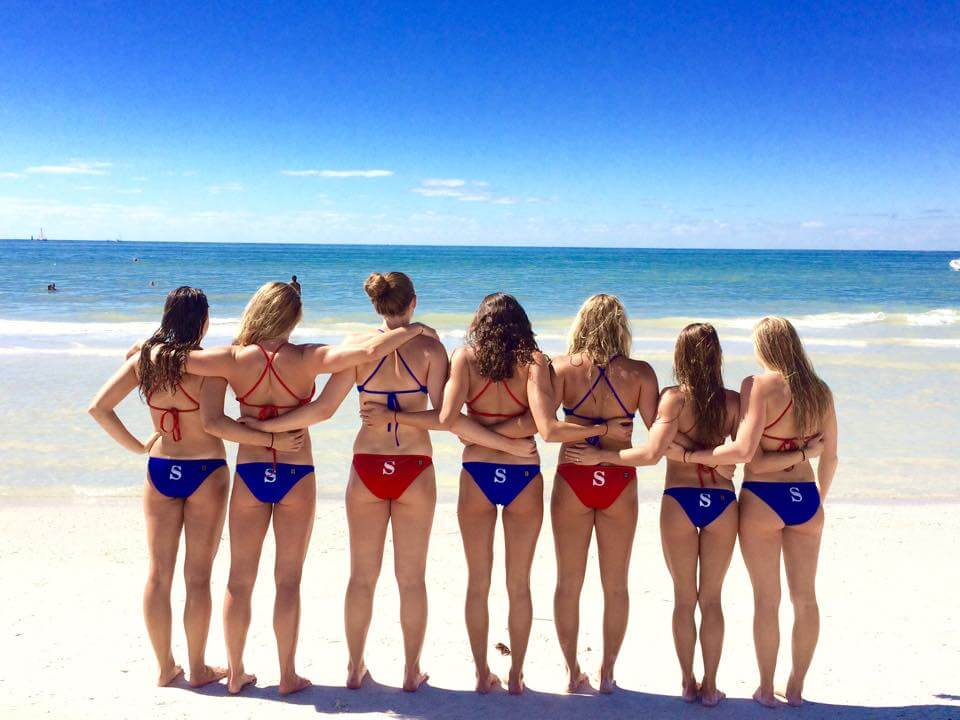Spring Break Offers Disappointed Swimmers A Chance to Refuel

By Abby Boone, Swimming World College Intern
No swimmer begins a race thinking they want to come in last place. Every swimmer has goals – times to beat and things to achieve. For many collegiate swimmers, the main goal is to make the NCAA Championships.
A conference meet is an excellent place to perform and show how hard you have worked all year, but NCAAs is the mecca of collegiate swimming.
Unfortunately, the coveted NCAA meet is not an easy goal. Each year the times get faster, the standards get higher, and only a few fast swimmers get invited to the meet.
Last year, Division I invited 235 men and 281 women to the championship meet, a tiny percentage of the 3,896 men and 5,528 women who were a part of varsity rosters for the season. Division II was a little better, inviting 157 and 183 of the 1,352 and 1,640 men and women, but Division III invited only 236 and 243 of the 4,395 and 5,248 men and women on rosters.
An Abrupt End
Those who get invited to the championship come home from their conference meet and continue training, focusing on their taper and waiting for their final collegiate swims of the season, but what about the thousands who do not make the cut? Suddenly, their season is over and they can do little but wait until the next year.
Some student-athletes know they won’t make the cut, but others miss their by chance tenths or hundredths of a second. No matter how far off the needed time, all have missed their chance and many are disappointed. Their plans have changed and their season has ended before they wanted it to. Then spring break comes.
Instead of spending the week dwelling on last season’s disappointments, student-athletes should enjoy the break. Whether spending it with teammates, family, or friends, spring break is the perfect opportunity to celebrate the accomplishments of the season. No, it is not going to be spent preparing for NCAAs, but instead is a chance to step away from the swimming world.
Taking A Break
A break is an important part of refocusing, refueling, and reflecting. It provides a time to decompress and prepare for the future- to decide where to head and what goals to set. Dr. G John Mullen suggests in his article that younger swimmers should take off at least two months a year so they can spend time out of the water and train in other methods. This goes for older swimmers too. The timeline may be different, but taking time to train differently and refresh your mental game is important.
A break offers a chance to mentally and physically begin again. Non-stop use of anything makes it begin to break down, and the body is no exception. Recovery is an important part of any training schedule, allowing muscles to rest and recuperate. One day is not always enough.
Even the most serious athletes need extended time off so that overtraining doesn’t become an issue. A week off can provide the refreshment needed to allow the body to come back stronger and more ready than before.
Swimming is a sport that doesn’t end, but that doesn’t mean a break is a bad thing. If you didn’t get that coveted invitation, don’t fret. Take a step back as you come to spring break and enjoy yourself. Do something fun, make memories, and then return to school, focused for the end of the semester and ready to jump back in the pool and train for the next year.




What kind of training do you think is best for this off season time?
In some ways, I think no training is a good option. For at least a few days give your body and mind a total reprieve. But cross training–playing around with a new sport or a completely different workout–is a good way to stay refreshed without completely stopping exercise.